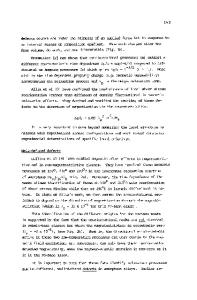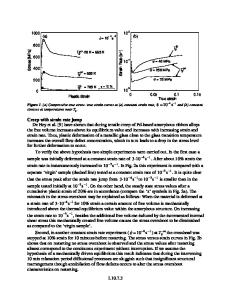Thermal Stability and Relaxation Processes of the Ti-Cu- and Ti-Ni-Based Metallic Glasses
- PDF / 283,008 Bytes
- 6 Pages / 414.72 x 648 pts Page_size
- 95 Downloads / 319 Views
Amorphous metallic alloys by their nature are metastable. Different authors note a number of criteria defining the stability of the amorphous state. These are the structural criterion based on the Bernal model, the electronic criterion, the size factor and the Donald-Davies thermodynamic criterion [1]. The question of using the Nagel-Tauc electronic criterion for "metal-metal" type amorphous alloys is still discussed, because the peculiarities of electronic structure of components in amorphous metallic alloys (in particular - the problem of electron transfer between components at amorphyzation) has not been well studied. The correlation between electronic structure and thermal stability intervals on the basis of magnetic susceptibility data and the processes of structural relaxation of the Ti-Cu- and Ti-Nibased amorphous metallic alloys were investigated in this work. EXPERIMENTAL PROCEDURE The amorphous Ti-Cu- and Ti-Ni-based alloys were prepared with the melt spinning technique. Amorphous structure was verified by X-ray diffraction. Temperature dependences of magnetic susceptibility X(T) were obtained using the Faraday-type technique with automatic microbalance (the sensitivity was equal to 10-11 cm 3/g and accuracy was better than 1.5%). Thermopower ET as a function of annealing time t at different annealing temperatures Ta
Data Loading...











